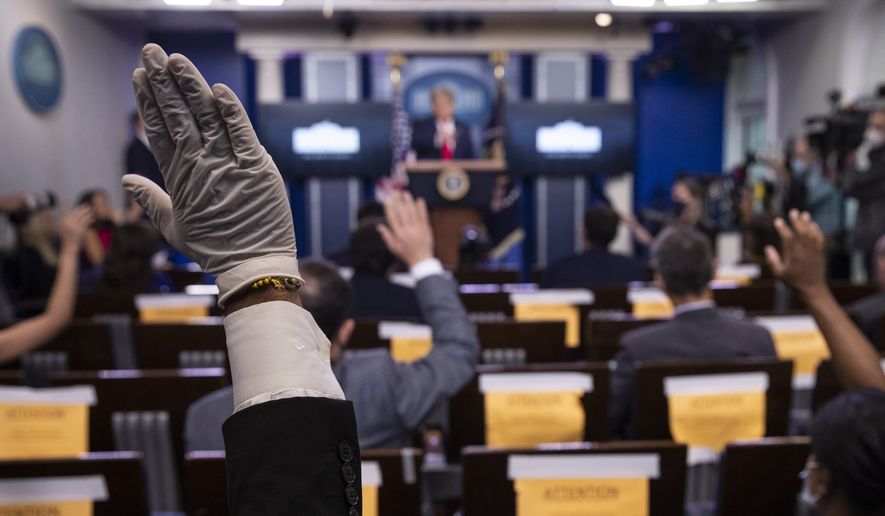Americans’ distrust for the news media to tell the story straight has reached unprecedented levels, an alarming development for any functioning democracy, a new poll reveals.
The “low levels of public trust in the nation’s polarized media environment” arrived as a key finding in a survey released Tuesday by the Knight Foundation and Gallup Inc., which have tracked public sentiment about media preferences for years.
Overall, pollsters found wide agreement that U.S. media is necessary to ward off misinformation, but few Americans believe that job is being tackled by the press.
“Most Americans have lost confidence in the media to deliver the news objectively,” said Sam Gill, Knight’s senior vice president and chief program officer. “This is corrosive for our democracy.”
The poll reports Republicans (71%) more often than Democrats (22%) and independents (52%) have unfavorable opinions of media outlets. More than 4 out of 5 Americans (86%) say that news organizations advocate political viewpoints rather than report the news free of bias.
“It basically is confirming what various other studies have shown,” Penny Muse Abernathy, the Knight Chair in Journalism and Digital Media Economics at the University of North Carolina’s Hussman School of Journalism and Media, told The Washington Times.
“I think that it’s what we found over and over and over again is when you’re not getting local news, your only source of news is either television or the internet, and 90% of what you get is going tone national in scope,” Ms. Abernathy said.
The distrust is not new but increasingly sustained, say industry observers. Since the late 1990s, Gallup has tracked rising incredulity toward mainstream media. But the percentage of Americans seeing bias in the media or outright fabrication of facts (28%) has calcified, particularly among self-identified Republicans and the 1 in 5 Americans who claim to be “very conservative.”
The poll highlights the growing share of younger Americans who turn first to online news, rather than print or television. The results portend growing disenfranchisement for millennials and Gen Z and potential vulnerability to internet hoaxes and conspiracy theories, which flourish online, say the study’s authors.
“Americans who primarily access their news online — predominantly, younger Americans — are less likely to be knowledgeable about their local communities and to feel attached to their communities,” said Tuesday’s report.
The poll also shows that viewers who regularly tune in or reach for ideologically-rooted news programming or commentary programs tend to see less political bias than members of political parties whose media consumption is less driven by partisan sympathies.
Some industry observers reacted Tuesday with pointed questions about the underlying premise in the poll.
“What’s so grating about this is that we never should have promised objectivity. Failing to deliver that false god is inevitable. It was a lie,” tweeted Jeff Jarvis, writer and professor at City University of New York’s Graduate School of Journalism.
Jennifer Moore, an associate professor of journalism at the University of Minnesota-Duluth, said media organizations are often held to the standard of “objectivity,” but such a “myth” is a standard not fully reflecting the job of good reporting.
“I tell students they [as reporters] need to be fair in their reports and seek the truth and tell the truth,” Ms. Moore told The Times. “But what’s the objective way of reporting on enslavement? Or structural racism? Is there two sides to that story? We need to do a better job as a society to go back to some civics classes and learn about the news media and the relationship of journalism to democracy.”
Other findings in Tuesday’s poll provide a snapshot of American media consumption. In the realm of cable news, Fox News viewers (23%) are more likely than CNN viewers (17%) to say their source has a great deal of bias.
While only 1 in 100 persons between the age of 18 and 39 count on print newspapers or magazines for as their go-to news source in the mornings.
Overall, 51% of Americans get their news online, 35% from television, 9% from radio, and 5% from magazines or newspapers.
The poll was collected over the winter of 2019-2020, before the onset of the coronavirus.




Please read our comment policy before commenting.